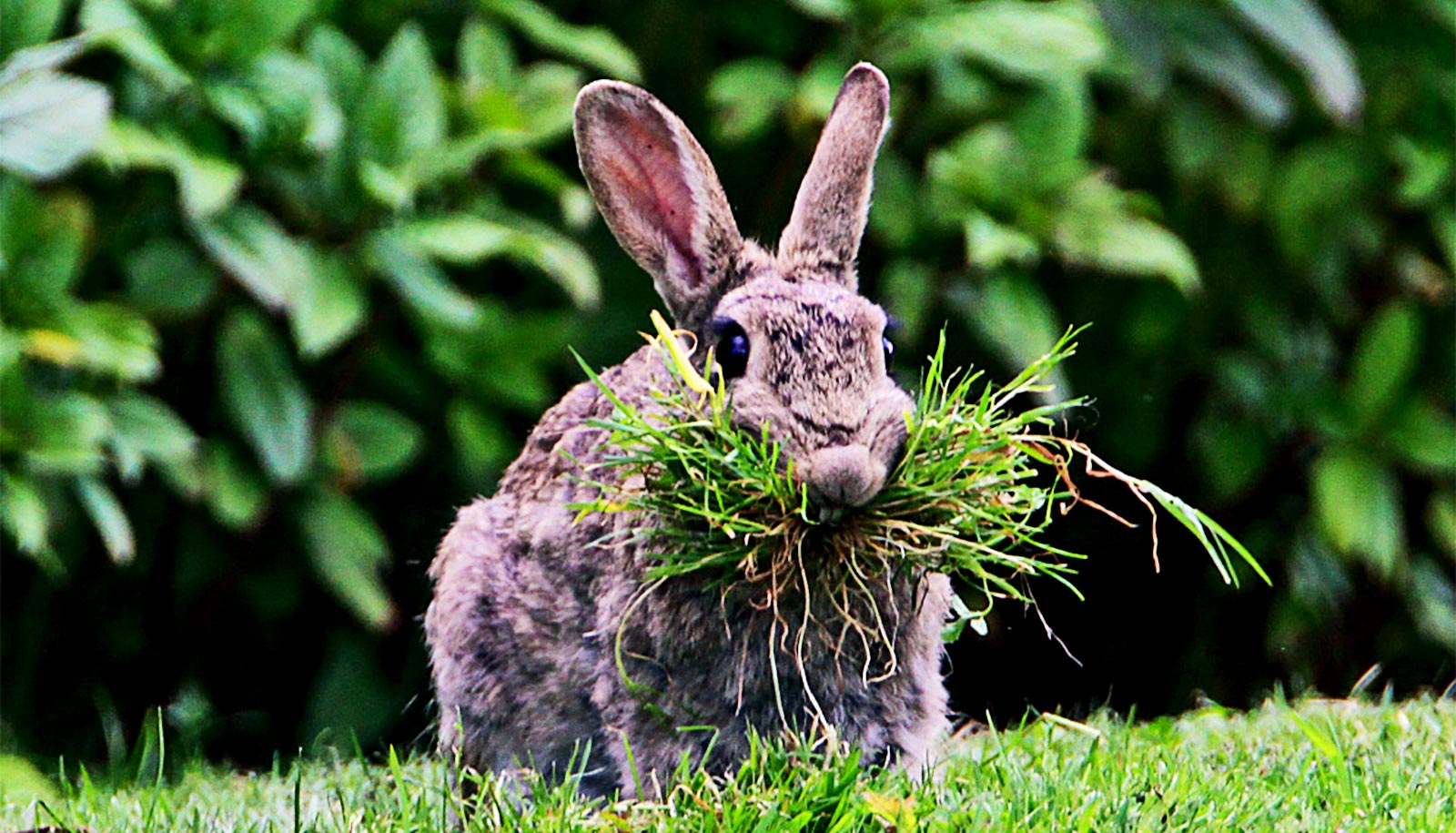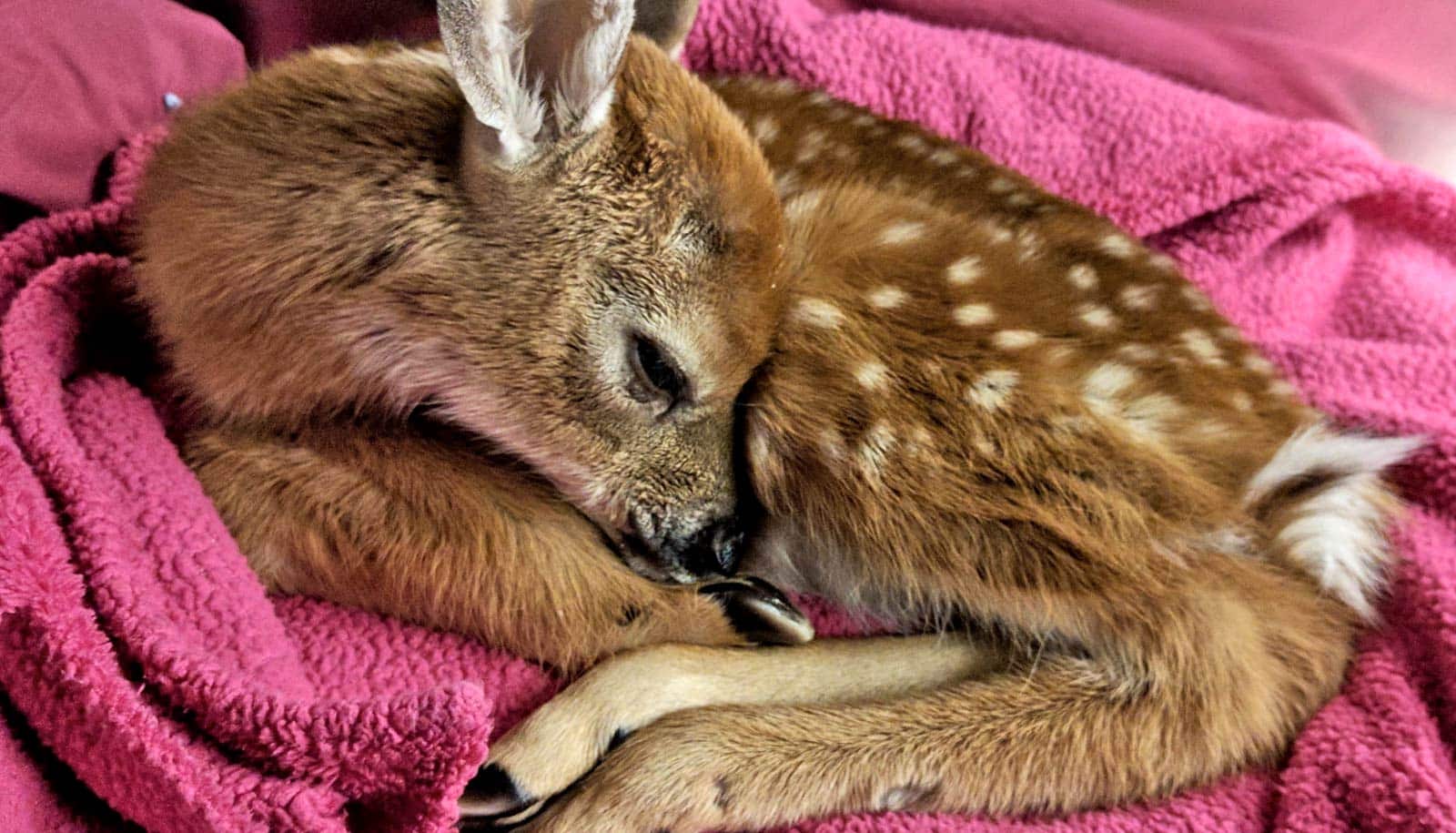Researchers have found changes in gene expression patterns across the brain between wild and domestic rabbits, which likely contributed to the evolution of tameness during domestication.
By demonstrating that domestic animals acquired tolerance toward humans through regulatory changes of certain genes, researchers are able to better understand the link between genetic changes and the mechanisms of evolution in rabbits and, at a larger scale, of plants and animals in general.
The research builds off previous work by Leif Andersson, a professor at the Texas A&M University College of Veterinary Medicine & Biomedical Sciences (CVMBS), demonstrating a link between rabbit domestication and brain structure.
The European rabbit is one of the most recently domesticated animals, exhibiting distinct morphological, physiological, and behavioral differences from their wild counterparts. Tolerance of humans and tameness are noted traits differentiating the domestic and wild rabbits.
Domestication is often associated with the rapid development of such traits in a rather short evolutionary time period. As such, domestication has long been a major topic in evolutionary biology, as it allows researchers to study the mechanisms of evolution on a more manageable time scale.
In the study in Genome Biology and Evolution, the researchers compared gene expression patterns in four brain regions between newborns of wild and domestic rabbits. They detected hundreds of genes differentially expressed between the two.
“It is important to notice that the drastic changes in behavior between domestic animals and their wild ancestors are associated with changes in how genes are expressed during the development of the brain,” Andersson says.
“The domestication of plants and animals is one of the most important developments during human history. In this study, we shed light on how this process has altered brain function in domestic animals and made them tamer.”
One significant finding was that genes involved in dopamine signaling, a chemical involved in fear responses, were expressed at higher rates in the amygdala, or area of the brain associated with memory, decision-making, and emotional responses, of the domestic rabbit. Notably, the amygdala is known as the part of the brain driving the “fight or flight” response, which would play a part in determining whether a wild animal flees in the company of humans or a tame animal tolerates human presence.
Researchers also found that genes associated with ciliary function were consistently downregulated in the hippocampus, an area of the brain associated with learning and memory, of domestic rabbits. Cilia cells are tiny hair-like structures that aid in the circulation of cerebrospinal fluid.
The flow of this fluid contributes to the transmission of molecular signals across the brain. Since these ciliary genes are important for brain development, the researchers hypothesized that these changes contribute to the evolution of tameness.
“We were really surprised by the consistent changes we observed that several genes involved in dopamine signaling were consistently unregulated in the domestic brain, and that many genes associated with ciliary function was consistently downregulated,” Andersson says.
Source: Texas A&M University


